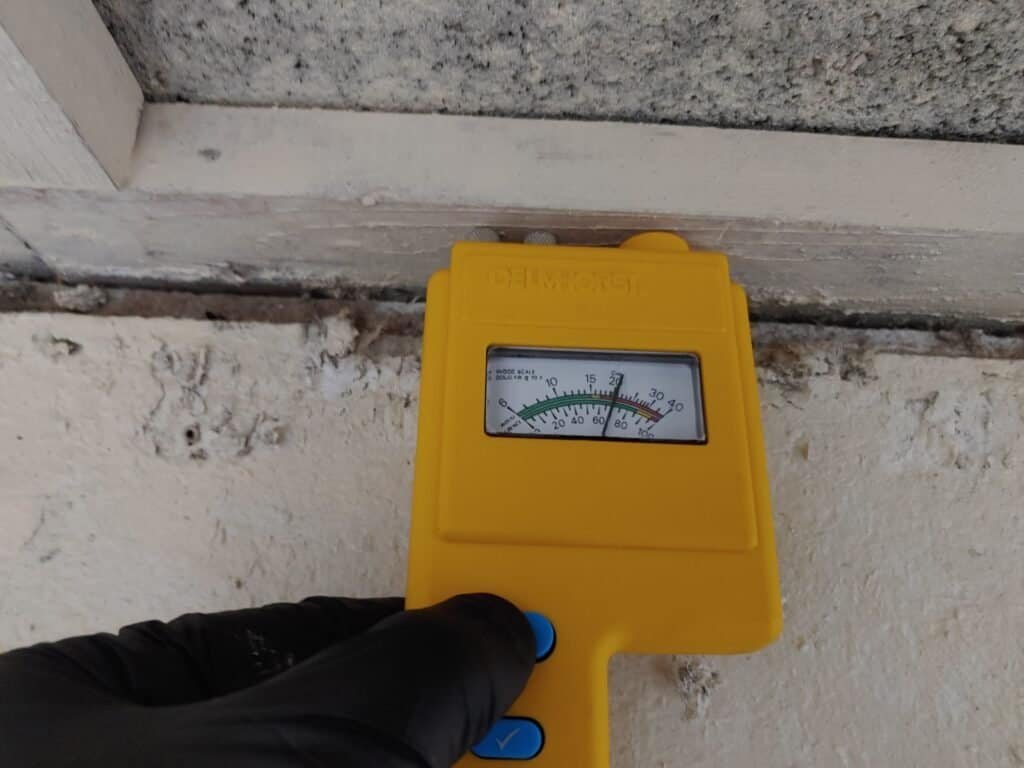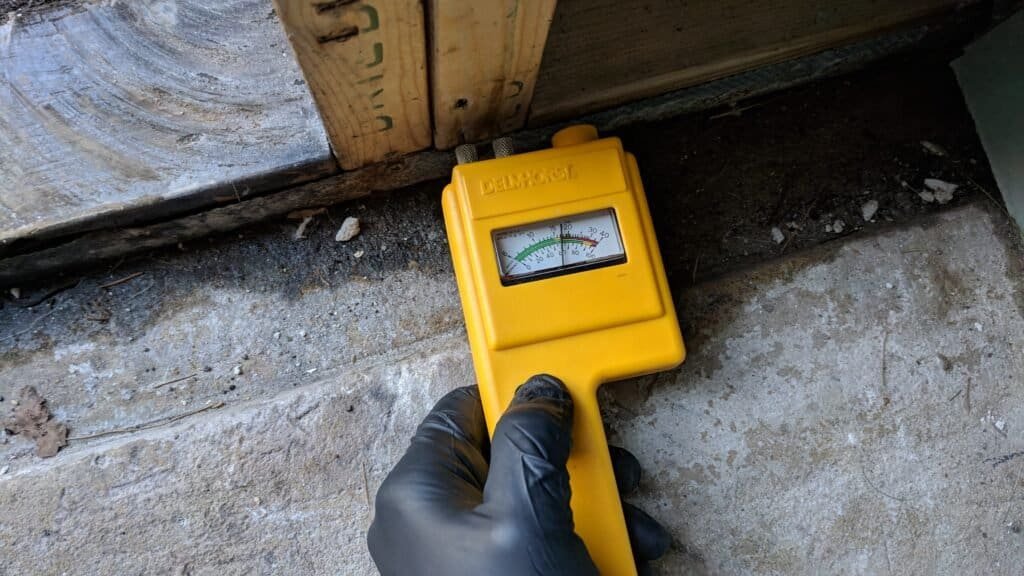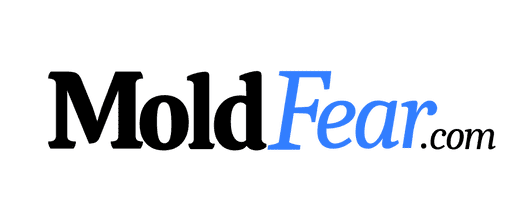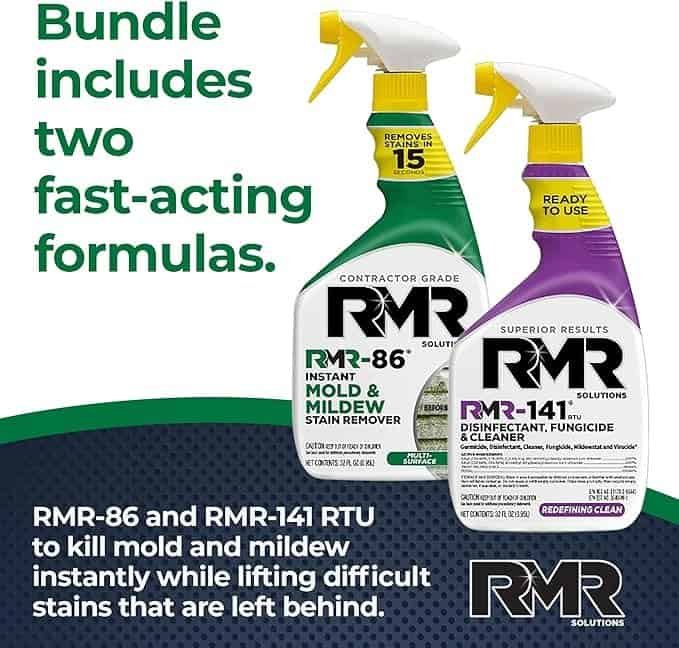Moisture meters are essential tools in assessing the risk of mold growth within various structures. These devices, which detect and quantify the level of moisture in materials, provide invaluable information during mold inspections. Excess moisture is a primary catalyst for mold proliferation, which can compromise structural integrity and indoor air quality. Recognizing the presence of moisture before visual signs of mold appear allows property owners and inspectors to take preemptive measures to mitigate potential problems.

In the context of a mold inspection, moisture meters serve a dual purpose: identifying potential problem areas and verifying the efficacy of remediation efforts. Whether using pin-type meters, which measure moisture content by penetrating material surfaces, or pinless meters, which use electromagnetic sensors to scan for moisture without causing damage, professionals can locate hidden pockets of moisture that are conducive to mold growth. By pinpointing these areas, inspectors can focus their efforts more accurately and recommend specific, targeted actions for mold prevention or remediation.
Key Takeaways
- Moisture meters are crucial in detecting early signs of potential mold issues.
- Accurate moisture measurement is key for targeted mold prevention strategies.
- Regular use of moisture meters is vital for ongoing property maintenance and mold control.
Understanding Moisture Meters

Moisture meters are crucial tools for identifying potential mold issues in various materials. They measure moisture content with precision, aiding in the prevention of mold growth.
Types of Moisture Meters
Moisture meters typically come in two main types: pin-type and pinless. Pin-type meters assess moisture content by inserting two pins into a material and measuring the electrical resistance; the higher the moisture content, the lower the resistance. In contrast, pinless meters use radio frequency signals to detect moisture without causing damage, as they do not require penetration into the surface.
How Moisture Meters Work
These devices function on the principle that materials with high moisture content will conduct electricity better than dry materials. Pin-type meters work by sending an electrical current through the pins and measuring the resistance encountered. Low resistance indicates high moisture levels. Conversely, pinless meters detect moisture levels via electromagnetic sensors that read the changes in radio frequency signals caused by differing levels of moisture in the material.
Selecting the Right Moisture Meter
When choosing a moisture meter, consider the following:
- Material Type: Some meters are calibrated specifically for wood, while others are designed for a wider range of building materials.
- Measurement Depth: Pinless meters are advantageous for scanning larger areas quickly, while pin-type meters can provide more localized readings.
- Features and Accuracy: Advanced meters offer features like data storage, Bluetooth connectivity, and material-specific calibration for precise measurements.
Moisture and Mold Correlation

Moisture is a critical factor in mold growth, providing the necessary environment for mold spores to settle and proliferate. Proper moisture management is therefore essential in preventing mold infestations.
How Moisture Contributes to Mold Growth
Mold spores are ever-present in the environment and only require moisture and organic material to begin growing. Cellulose fibers, which are found in wood and paper products, offer a prime medium for mold when combined with moisture. Basements and attics are typical areas of concern due to their propensity for high humidity levels and moisture intrusion. These environments are often less climate-controlled, creating conditions ideal for sustaining mold.
Identifying High-Risk Areas
Effective mold inspection hinges on identifying areas with excess moisture. Using a moisture meter, inspectors can detect heightened moisture levels in various materials, such as wood within crawl spaces. A moisture meter’s role is pivotal since visual inspection alone cannot always reveal the extent of moisture penetration. The detection of such high-risk areas, especially where high humidity exceeds 60%, can prompt immediate remedial action to mitigate mold risk before it becomes a more significant concern.
Practical Application of Moisture Meters in Mold Inspections
Moisture meters are instrumental in mold inspections. They provide quantitative data on moisture content, revealing potential problem areas prone to mold growth in building materials.
Moisture Measurement Techniques
Moisture measurement in mold inspections utilizes calibrated moisture meters to quantify the moisture content (%mc) in building materials. The two primary techniques involve pin-type and pinless moisture meters. Pin-type meters measure %mc at the point of contact by penetrating material surfaces, useful for assessing wall cavities and ceiling. Pinless meters, on the other hand, employ an electromagnetic sensor to non-invasively detect moisture content near the surface of flooring and walls. Methods of use include:
- Direct Contact: Placing or inserting the meter onto or into the material.
- Non-Destructive Testing: Scanning the surface without causing damage.
Interpreting Moisture Readings
Understanding moisture meter readings is crucial for identifying potential mold issues. Moisture content is expressed as a percentage (%mc), with specific thresholds signaling elevated mold risk. Interpreting these readings involves comparing them to established dry standards for various materials. For instance, a reading consistently above 16% in wooden materials typically indicates a high likelihood of mold growth. One must consider:
- Material Baselines: Different materials have varied moisture norms.
- Environmental Factors: Ambient humidity and temperature can affect readings.
Early Detection and Prevention
Proactive use of moisture meters can prevent mold infestation by identifying moisture pockets that become breeding grounds for mold. Early detection of dampness in materials allows remediation steps before mold becomes visible or structural damage occurs. Effective prevention focuses on:
- Routine Checks: Regular monitoring of areas susceptible to moisture.
- Immediate Action: Addressing high %mc readings promptly to halt mold growth.
By leveraging the practical application of moisture meters in these ways, professionals can safeguard properties against the risks posed by mold.
Avoiding Common Mistakes

Effective mold inspections hinge on the proper use of moisture meters. To ensure accuracy and safety assurance, one must pay attention to regular calibration, understand the limitations of the equipment, and take measures for accurate detection.
Calibration and Maintenance
Moisture meters require routine maintenance to operate correctly. Calibration should be performed according to the manufacturer’s specifications to maintain the integrity of the readings. Users should check calibration regularly, especially before critical inspections, to avoid erroneous data that could lead to undetected moisture and subsequent mold growth.
Understanding Meter Limitations
Moisture meters measure the electrical resistance to assess moisture levels, which vary based on the material being tested. It’s crucial to understand that different meters are suited for different materials—some are specific to wood, while others are designed for building materials like drywall. Users must select the appropriate meter for the surveying material to prevent incorrect moisture readings.
Ensuring Accurate Detection
For accurate detection, inspectors should ensure the meter’s pins or sensors make full contact with the surface being tested. Surface moisture can skew readings, so it’s essential to probe deeper if necessary. For non-invasive meters, understanding the depth of reading and ensuring the meter is on the correct setting are vital steps in the detection process. To contact us for further details or assistance with moisture meters and mold inspections, refer to the provided contact information within the instruction manual or company website.
Mold Remediation and Moisture Control

Mold remediation is imperative to maintain a healthy living environment as it helps remove or clean up mold from indoor environments, whereas moisture control is crucial to prevent its regrowth. A thorough approach to handling these issues involves not only dealing with the present mold but also ensuring it doesn’t return by managing moisture levels effectively.
Addressing Mold Issues
When confronting mold issues, it’s essential that restoration experts undertake thorough cleaning to remediate all visible mold. However, it’s equally important to identify and address hidden mold which may lurk in less obvious places. Combating these hidden issues often requires a multifaceted strategy involving detailed inspections and cleanup efforts. A comprehensive remediation effort can help to mitigate potential health risks associated with exposure to mold, which range from allergic reactions to more severe respiratory problems.
Moisture Meter Use in Remediation
Moisture meters play a vital role in mold remediation by detecting dampness that cannot be seen by the naked eye. They are instrumental in discovering moisture pockets that support mold growth. By identifying these areas, professionals can apply the necessary countermeasures, such as dehumidification or fixing leaks, to control moisture levels. Continual monitoring of these levels is a key best practice followed by restoration experts to ensure that the environment remains unfavorable for mold growth and the potential for rot is minimized. This proactive approach is fundamental in the fight to not just clean up mold, but to keep it gone.
Beyond Inspections: Moisture Meters in Property Maintenance

Moisture meters are pivotal not only during the mold inspection process but also in the regular maintenance of both residential and commercial properties. These devices help property owners, home buyers, and sellers identify potential problem areas that may require home repairs or indicate underlying issues with structural integrity.
For Homeowners:
Regular monitoring with a moisture meter can pre-emptively address moisture problems before they exacerbate into costly mold remediation or impact the building’s structural integrity.
- Bathrooms and kitchens: Frequent checks can prevent mold growth due to high humidity.
- Basements: Early detection of moisture can avoid foundation issues.
In Commercial Settings:
Property maintenance teams use moisture meters to ensure that commercial buildings remain free of mold. Consistent checks are crucial for:
- Inventory storage areas: Protecting goods from moisture damage.
- Facility rooms: Where HVAC systems are at risk from condensation.
During Transactions:
For home buyers and sellers, presenting moisture meter readings during a home inspection adds transparency to the transaction. It provides a clear, factual basis for any required repairs and can influence negotiations.
- Sellers: Can demonstrate due diligence in property maintenance.
- Buyers: Gain insight into the long-term upkeep of the potential investment.
Property maintenance, whether pre- or post-ownership, benefits from the regular use of moisture meters. They serve not just as a diagnostic tool during mold inspection but as a preventive measure in the upkeep of properties, promoting a proactive approach to property health.
Frequently Asked Questions

When it comes to mold inspections, utilizing a moisture meter can be pivotal in preventing and diagnosing mold-related issues effectively. These devices offer quantifiable data that aid in accurate mold risk assessments.
What is the significance of using a moisture meter during mold inspections?
A moisture meter is crucial during mold inspections because it enables inspectors to detect excess moisture, a primary catalyst for mold growth. Without such tools, unseen moisture could go undetected, leading to significant mold development.
How does a moisture meter contribute to the accuracy of mold detection?
Moisture meters assist in mold risk determination by providing precise measurements of moisture in various building materials. This data confirms if conditions are conducive to mold growth, ensuring accurate detection of potential mold issues.
What are the benefits of using a pinless moisture meter over a pin-type meter in mold assessments?
Pinless moisture meters offer non-destructive testing, eliminating the need for pins to penetrate surfaces, which can be beneficial for preserving the integrity of inspected materials. Pinless meters quickly scan a larger area, making them efficient for the identification of mold-prone areas.
At what relative humidity levels should one be concerned about mold growth in buildings?
Concern over mold growth in buildings should arise when relative humidity levels consistently exceed 60%, as mold spores typically thrive in such moist environments. Persistent high humidity can result in mold issues that compromise building integrity and indoor air quality.
How can differences in moisture content in materials indicate potential mold issues?
Differences in moisture content in materials may indicate potential mold problems. A high moisture content relative to the surrounding environment suggests dampness that could foster mold growth if not addressed promptly.
What are the advantages of using a professional-grade moisture meter for home inspectors dealing with mold?
Home inspectors benefit from using professional-grade moisture meters as they often provide more accurate and consistent data. They are calibrated for various materials, facilitating better assessments of mold risk and enabling inspectors to take preventative measures against widespread mold damage.














